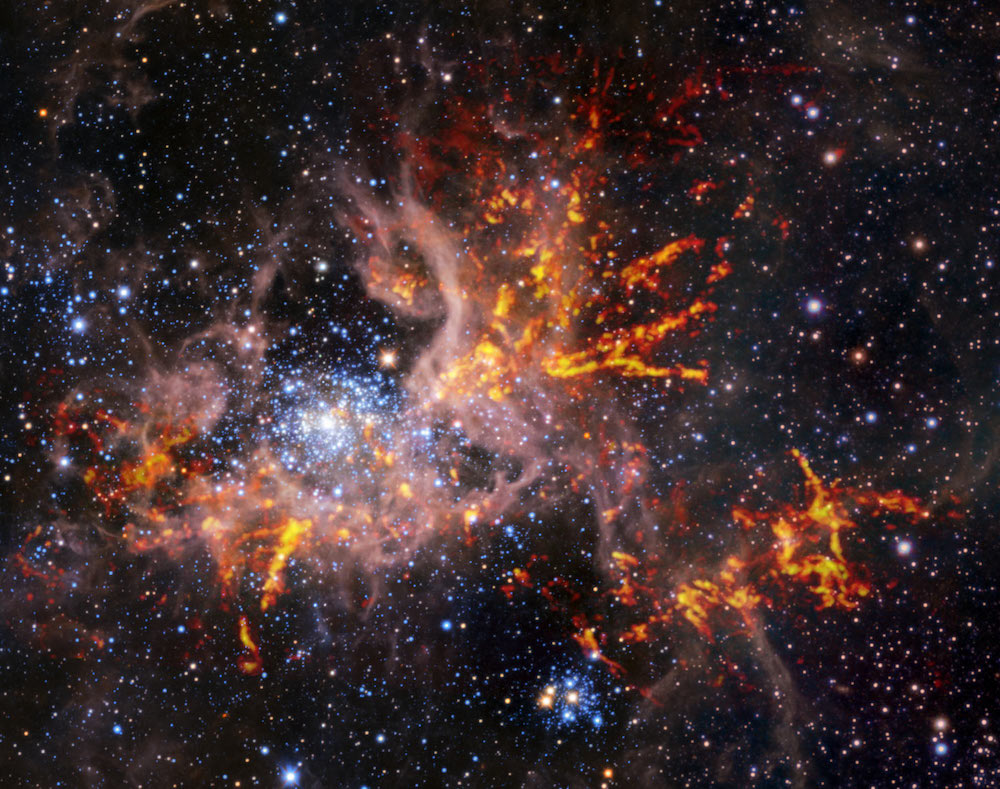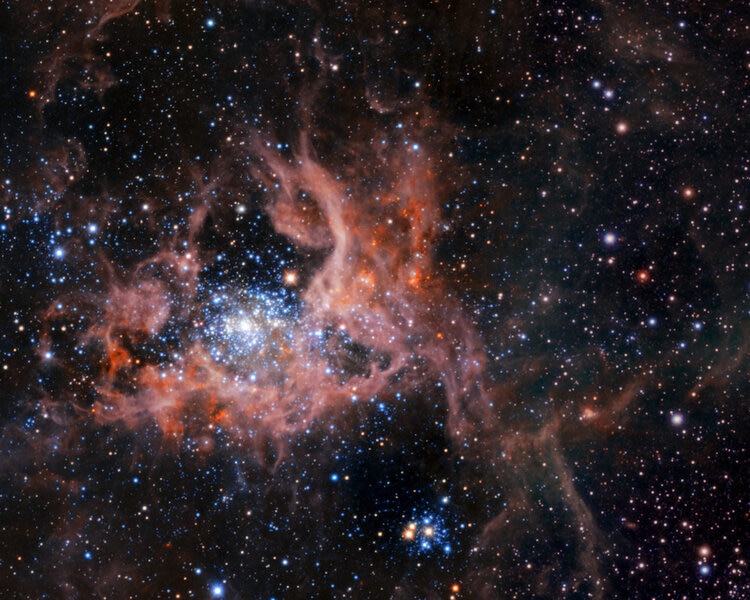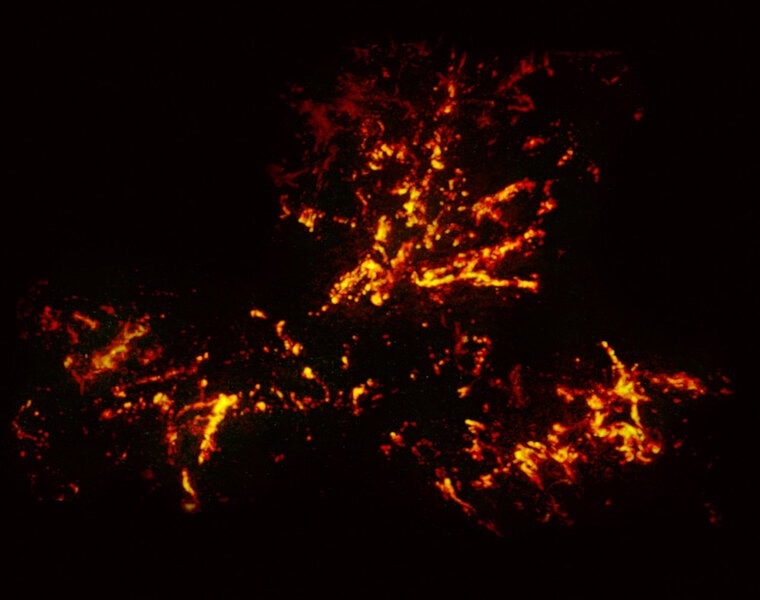Create a free profile to get unlimited access to exclusive videos, sweepstakes, and more!
The Tarantula shreds its enormous cocoon
Winds from stars blow away gas for hundreds of light-years.

If it’s an arachnid, it’s one that’s 20 quadrillion kilometers across.
That’s a big spider. Happily though, I'm actually talking about an immense cloud of gas and dust called the Tarantula Nebula, a powerful and beautiful star-forming factory located 170,000 light-years away in the Large Magellanic Cloud, the biggest of the Milky Way’s satellite galaxies.
And it’s busily laying eggs: The cluster of stars in its center, called NGC 2070, has a half million times the Sun’s mass, so likely millions of stars in it. It’s so huge astronomers think it may be forming what will one day become a globular cluster. There are so many massive stars in this cluster — some of which are perhaps 150 times the Sun’s mass, about the upper limit for stars in the current Universe — that it’s incredibly luminous, thousands of times more so than the Orion Nebula.
There’s a lot of power locked up in there, and that has a profound effect on its environment.
Surrounding the nebula, as is the case for most big star-forming regions, is a larger cloud of dense, cold gas. This is harder to see because it emits no visible light. However, some of the gas in this molecular cloud is carbon monoxide, and it glows at wavelengths far outside what our eyes can see, in the millimeter to centimeter range. That’s exactly what the Atacama Large Millimeter/submillimeter Array (or ALMA) in Chile is designed to see, so when astronomers pointed it at the Tarantula they saw the true nature of what those stars were doing [link to paper].
Those long orange filaments are actually the ALMA observations of carbon monoxide, colored so that we can see them and superposed on an infrared image of the cluster and nebula. They look like explosions! And that’s not too far off: Those are denser parts of the molecular cloud being blown away by the might of the cluster stars.
Massive stars are extremely bright, thousands of times more luminous than the Sun. This is so much energy that the gas at their surfaces can be blown off by it, screaming away as a stellar wind that can be incredibly fast, hundreds of kilometers per second. When that outflowing gas slams into the colder surrounding cloud, it can in turn erode and blow away denser clumps of material, which then form those long tails. Note that on the upper filaments, they all point away from the central cluster stars? Yeah, big hint on what’s going on there.
This cluster is relatively young, so this hasn’t been going on for long enough to destroy the colder cloud, though that may eventually occur, or at least a big chunk of it. In some nebulae that can stop star formation, because the gas can’t collapse to form new stars when it’s being shredded.
In the filaments you can see local bright spots, knots of denser gas. When the astronomers measured the velocities of the gas in those knots they got a big surprise. They see a big spread of velocities toward and away from us, which is expected in turbulent gas; it’s churning around and on a local scale is moving every which way even as the overall gas is flowing away from the cluster. But the velocities weren’t as high as expected, and given the density of the gas, it may not be enough to disrupt those knots.
In other words, amidst all maelstrom, those knots may yet collapse to form stars.
That’s phenomenal. Like finding an intact nest of bird eggs in a hurricane. I would not have expected that to be able to happen. Now, there is a lot of gas floating around in that cloud, millions of times the Sun’s mass, so some of the denser spots are likely to be pretty robust. But it’s still surprising.
But not uncommon; the Orion Nebula has eerily similar structure as well. This may be common in large star-forming nebulae.
It’s rather nice to think that stars are being born out there, providing light and heat and the necessary ingredients for planets to form and, perhaps, life, even in places where I would really bet against it.
I don’t want to fall victim to the pathetic fallacy and anthropomorphize the Universe, but sometimes it seems like it really wants to makes stars, and damn the fools who think it won’t.





























